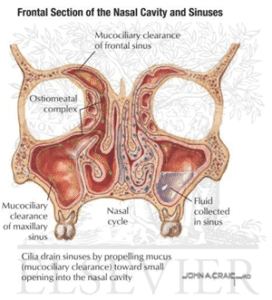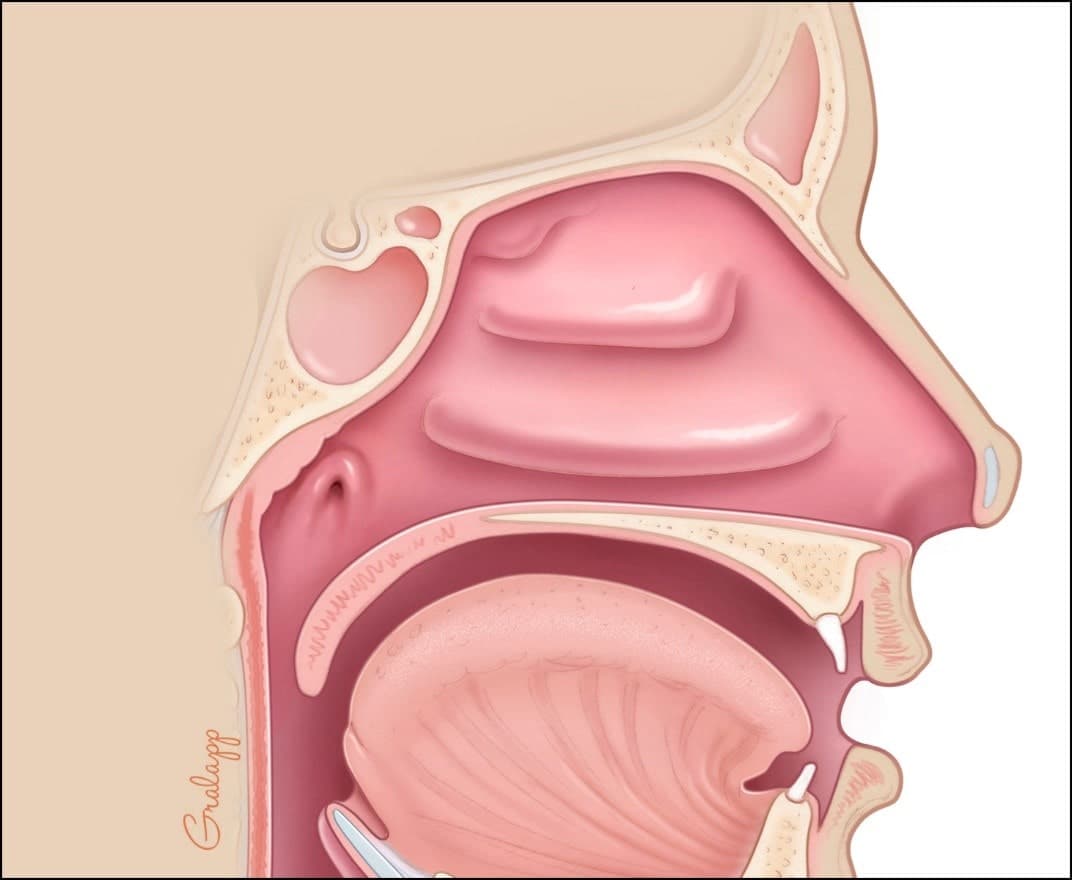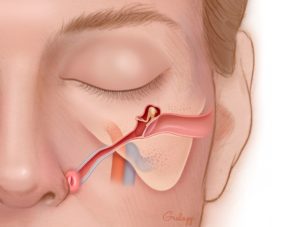How to Stop Sinus Pain and Pressure When Flying
How to Stop Sinus Pain and Pressure When Flying
Many people do not enjoy flying because of severe sinus pain and pressure takeoff and landing. Let’s discuss why you’re experiencing sinus pain and how you can stop it from happening.
What is sinus pain?
Sinuses are spaces inside your forehead, cheekbones and behind the bridge of your noise. They are the airways for you to breathe. These air-filled spaces become inflamed because of an allergic reaction or infection they will begin to swell and create an excess of mucus which prevent these channels from draining and they become blocked. The build-up of pressure in your sinuses can cause pressure and pain.
Below is a picture of Nasal Cavity and Sinuses

Figure 3. Osteomeatal complex shown normal on the right side and swollen/obstructed/blocked on the left.
https://netterimages.com/frontal-section-of-the-nasal-cavity-and-sinuses-labeled-ovalle-pulmonary-medicine-john-a-craig-14502.html
Why You Experience Sinus Pain and Pressure While Flying?
When you are flying in an airplane, the changes in elevation can cause the delicate tissue lining in the nasal and ear openings to cause you pain and feel pressure. If there is inflammation, swelling or just very narrow connections linking the sinuses and ears to the nose, you may be at risk for sudden closure which can cause pain, congestion and, even lead to infection. Two common causes for sinus pain and pressure during flight is Eustachian Tube Dysfunction or Osteo-Meatal Complex (OMC) Obstruction.
Eustachian Tube (ET) Dysfunction
The eustachian tube is a mucous membrane lined tube that connects the back of the nose to the space behind the eardrum. This tube plays a very important role in keeping the space behind the eardrum at the same pressure as the surrounding atmospheric pressure. If it becomes blocked up, the pressure behind is not the same as in front of the eardrum and then the eardrum will retract. There is a very rich supply of nerve endings on both sides of the eardrum, so pain occurs. If the eustachian tube does not open, then fluid and infection will follow. This type of dysfunction can become apparent when you experience changes in altitude.

Figure 1. Side view of nose with the Eustachian Tube (small opening) shown in the back (left) of the nasal cavity. Note that the front of the nose is shown at the right side of the photo. https://otosurgeryatlas.stanford.edu/otologic-surgery-atlas/surgical-anatomy-of-the-ear/eustachian-tube/

Figure 2. Eustachian Tube linking the nasal cavity to the ear.
Osteo-Meatal Complex (OMC) Obstruction
The osteo-meatal complex is a very important, crowded/busy area, inside the nose where 3 sinus drainage pathways merge and connect to the nasal cavity. As described above with the ET, the pressure within the sinuses need to be the same as the atmosphere. If these delicate membranes swell, have pre-event excessive inflammation or the connection between the nose and sinus openings or ostea are just too small, then sudden pressure changes can cause a blockage and pain, pressure, congestion, and then possible infection in the sinuses. This type of dysfunction can become apparent when you experience changes in altitude.
In fact, this problem can be totally unexpected. Even if you never ever had any problems while flying, scuba diving or driving with changes in altitude, you too could experience these problems. If you follow these suggestions, you can lessen the risk for problematic issues.
How to Prevent Sinus Pain and Pressure While Flying
- Begin to Use Saline Nasal Rinse 10 Days Before Flight. If you have time before your travel, have a history of trouble flying in the past, a history of allergies, sinus issues or ear infections and you are having mild symptoms, then start using saline nasal irrigation such as NeilMed (hyperlink to my video of sinus irrigation), wait a few minutes then use an over the counter (OTC) nasal steroid spray like Flonase, Nasocort, or Rhinocort, as directed. Ideally you will start this 10+ days before your travel date. This is the optimal length of time for the medication to work effectively in your nasal passages. This will help you fly without troubles.
You can learn how to use a sinus nasal rinse by watching this short video: https://youtu.be/IhwLBKP4a80
- If you feel sick before travel, visit your healthcare provider. If you are close to your travel date and you feel congested, your allergies are acting up or if you feel sick, listen to your body. This may not be the best time to go scuba diving, avoid the high elevation of a car ride or consider cancelling your flight. Unfortunately, most times these options are just not practical. If you have a chance to see your healthcare provider, he/she may recommend treatment for your current inflammatory condition.
- Visit Ear, Nose and Throat (ENT) Doctor is Symptoms are Persistent. At Sinus and Allergy Wellness Center, we specialize in treating sinus related problems. We always recommend a holistic and conservative approach that will bring you lasting relief.
Earlier diagnosis usually provides best outcomes. Nasal/sinus problems are usually benign and easily treated but when the trouble persists or worsens, please seek medical attention as soon as possible. Basically, more time = more options.
If you live in Scottsdale or Fountain Hills, Arizona, you may contact the Sinus & Allergy Wellness Center via our website or call 480-493-4941 for more information.
Disclaimer:
The information provided in this article is for informational and educational purposes only and does not constitute medical advice. It is not intended to diagnose, treat, cure, or prevent any disease or medical condition. Always seek the guidance of your physician or other qualified healthcare provider with any questions you may have regarding a medical condition or treatment.
Results may vary: Treatment outcomes and health experiences may differ based on individual medical history, condition severity, and response to care.
Emergency Notice: If you are experiencing a medical emergency, call 911 or seek immediate medical attention.



